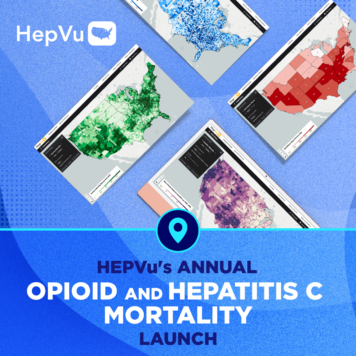Selected and summarized by Ronald O. Valdiserri, MD, MPH, Professor, Department of Epidemiology, Rollins School of Public Health, Emory University, and Co-Chair of HepVu.
Dr. Valdiserri reviews significant articles on prevention, public health, and policy advances in viral hepatitis. This month, he highlights “Peer-Assisted Telemedicine for Hepatitis C in People Who Use Drugs: A Randomized Controlled Trial” A Seaman, R Cook, G Leichtling, MC Herink, T Gailey et al. Clinical Infectious Diseases 2025; 80(3): 501-508.
What question(s) does this study address?
Because HCV is a blood-borne virus, persons who inject drugs (PWID) are at very high risk of acquiring and transmitting the virus, owing to the lack of sterile injection equipment and subsequent sharing of syringes and other injection equipment. Globally, nearly 40% of persons who inject drugs are estimated to have current HCV infection. In the United States, it’s estimated that there are nearly 3.7 million adults who inject drugs and in 2023 most of the 69,000 estimated new HCV infections in the US occurred among persons who shared needles and other equipment to inject drugs.
In rural areas of the U.S., widespread poverty, stigmatizing attitudes and policies around drug use, and lack of access to health and social services—including ready access to sterile injection equipment, treatment for substance use disorders, and access to HCV care—all contribute to an environment that promotes HCV risk. Case in point, a cross-sectional analysis of over 300 PWID from New York state published in 2022, showed that HCV seropositivity was significantly higher among PWID from rural areas (71%) compared to those from non-rural communities (46.8%).
Using peers to recruit persons from 7 rural Oregon counties who had injected drugs or used nonprescribed opioids in the past 90 days and were found to be positive for HCV RNA (i.e., had current HCV infection), Andrew Seaman and his colleagues undertook a randomized controlled trial (RCT) to compare a peer-assisted telemedicine model of HCV care to peer-assisted referral to local HCV providers.
What are the major findings of this report/article?
- Peers (outreach workers from a local community based organization providing services to PWID) recruited participants from rural syringe service programs, shelters and other outreach sites, and through participant referrals.
- From July 17, 2020 to December 12, 2022, 774 persons were screened to determine study eligibility and 203 were eventually randomized into one of two groups: 100 were randomized into the TeleHCV group and 103 into enhanced usual care (EUC) group.
- Peers supported screening and pretreatment laboratory testing for all participants in both groups. In the EUC group peers provided referral to local HCV treatment services. In the TeleHCV group, peers facilitated telemedicine visits with a study clinician, assisted with medication delivery and storage, and provided adherence support. The TeleHCV clinical team offered same-day unscheduled appointments and direct communication with peers to discuss participant concerns.
- Among all study participants, the average age was 42 years; 62% were male; 88% were White; 5% were Hispanic; and 69.5% reported houselessness in the last 6 months.
- Participants in both groups received financial compensation for study assessments and laboratory completion; no compensation was provided for treatment initiation in either group.
- 85% (85/100) of participants in the TeleHCV group initiated HCV treatment compared to 13% (13/103) in the EUC group.
- 63% (63/100) of TeleHCV participants achieved viral clearance 12 weeks after anticipated treatment completion date versus 16% (16 of 103) of EUC participants. [Note: Viral clearance among those in the EUC group who had not initiated HCV treatment was deemed to be the result of spontaneous viral clearance.]
What are the implications for the prevention and control of viral hepatitis?
- In this study of persons using drugs in rural settings, individuals randomized to the TeleHCV group had substantially increased HCV treatment initiation and viral clearance compared to those randomized to peer-assisted referral to usual care (EUC group).
- Low viral clearance rates in the peer-assisted EUC group suggests that peer navigation to HCV providers alone will not achieve HCV elimination among people using drugs in rural settings. Peer navigation must also be paired with low-barrier treatment models, like peer-assisted telemedicine visits with adherence support.
- These findings support the importance of engaging peers with lived experience throughout the entire HCV diagnosis and treatment process for persons using drugs in rural settings.




